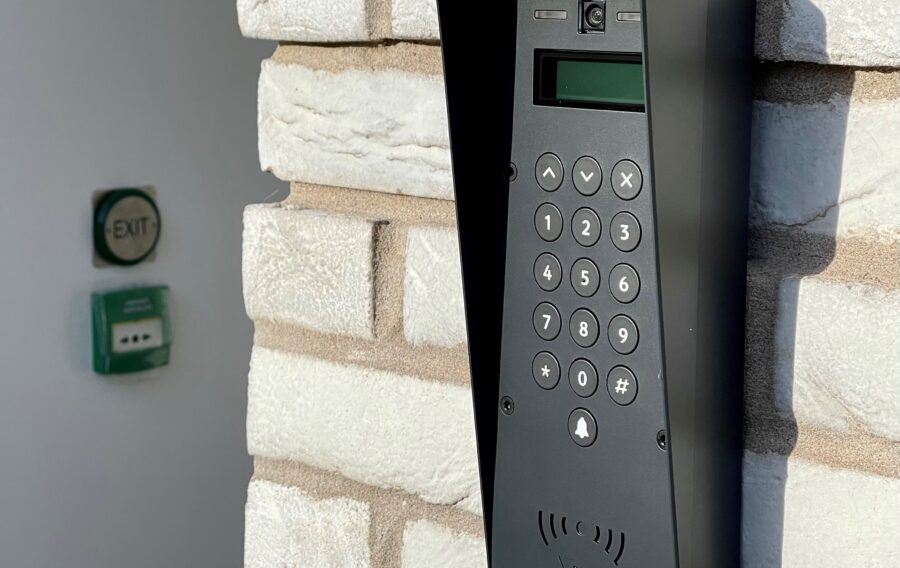Property managers that hold responsibility for housing developments should have a regular servicing plan in place for the fire safety measures.
As noted in The Regulatory Reform (Fire Safety) Order 2005, regular servicing and maintenance of fire safety measures are a legal requirement. It also provides reassurance that the fire safety equipment will work when it’s needed.
Your responsibilities as a property manager may see you directly involved with the day-to-day maintenance and servicing of this safety equipment, or it could be your role to delegate as necessary.
In a dwelling with multiple occupants, you would expect to find fire alarms, emergency lighting, fire extinguishers and fire doors as a minimum. The fire safety measures in any managed property must meet the requirements as set out by law.
A fire risk assessment will identify risks and hazards, and make suggestions relating to the equipment required on-site. It’s advisable to use a third-party accredited company to ensure the highest levels of compliance are met.
Fire Alarm Servicing
The Churches Fire & Security product offering includes the design, installation and maintenance of all types of detection. This includes beam detection, single-point smoke, heat and carbon monoxide, wireless and air sampling.
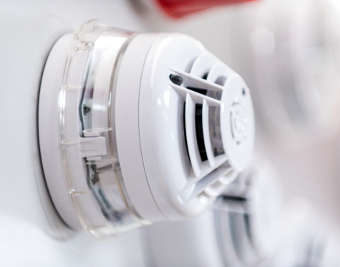
As a reliable and safe way of alerting residents to the presence of smoke or fire, fire alarms must be properly maintained. The minimum requirement for fire alarm servicing is every 6 months, in accordance with BS 5839.
An alarm service by a Churches Fire technician will include, but not be limited to:
- Alarm audibility terms
- Examination of batteries
- Secure panel wiring terminations
- Full check of alarm panel functions
- Check wiring is secure and undamaged
- Carry out function tests of initiation devices
Emergency Lighting Checks
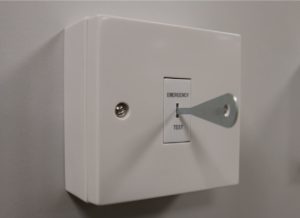
Emergency lighting illuminates the escape routes of a building, whilst also lighting up signs and other safety equipment. Operating automatically when a lighting circuit loses power from the mains supply, the emergency lighting in a managed property must also undergo regular servicing to make sure they work as expected.
As part of your building maintenance, a qualified fire safety technician should attend site twice per year to service the emergency lighting system in accordance with BS 5266-1.
A Churches Fire & Security technician will check that the batteries are operational, the expiry date of the batteries, the correct circuitry, the condition of the fittings and carry out tests of the switches and bulbs.
Fire Extinguisher Testing
One of the most recognisable pieces of fire safety equipment, fire extinguishers are portable devices used to control small fires, if it is safe to do so.
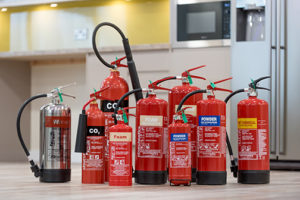
The Regulatory Reform (Fire Safety) Order 2005 mandates that fire extinguishers are required in all buildings. Your fire risk assessment will determine how many, and what class, extinguishers are required in the property.
An easy target for vandalism, you should carry out weekly visual checks of the extinguishers under your care. This time should also be used to check for any signs of corrosion, leakage and dents, as well as checking that the pressure gauge is undamaged and working properly.
Fire Door Inspection
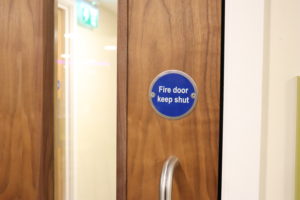 When fitted and used correctly, fire doors prevent fires from spreading through a building, allowing for evacuation and for the fire brigade to be called.
When fitted and used correctly, fire doors prevent fires from spreading through a building, allowing for evacuation and for the fire brigade to be called.
Fire doors are specifically built to withstand fire for up to 30 minutes. They are a legal requirement in apartments and flats where they open into communal areas of the building.
As recommended by BS 9999, a fire door inspection by a trained technician must take place every six months. Churches Fire & Security visually inspects fire doors, providing a condition report and recommendations for any suggested remedial works.
As property manager, it is your responsibility to ensure any defects with fire doors are dealt with promptly. On a daily basis you should be checking that the automatic release mechanisms are working and that no fire door is being propped open incorrectly. Monthly examinations should include, but not be limited to, checking that the gap between the leaf and door frame is 3 mm (+/-1 mm), that the handles operate correctly, that any glass is secure in the door and that all hinges are in place securely.
Fire Evacuation Training
All property management employees, tenants and property owners must be made aware of the fire safety measures in place, and know how to respond in the event of a fire emergency.
A comprehensive fire evacuation plan is required, and to ensure the plan works, drills should be carried out periodically. From these drills you will highlight any areas where further safety precautions are needed.
Managing properties comes with a vast number of responsibilities, not least the fire safety of the building and residents.
If you require advice and servicing from a third-party accredited fire safety supplier, contact Churches Fire & Security today,
Get in touch



